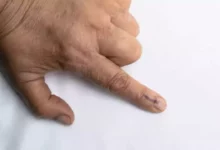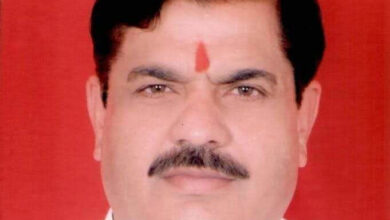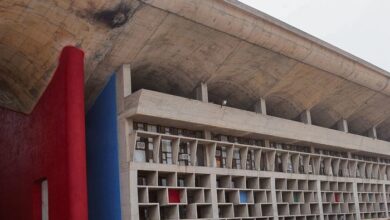Low voter turnout: Why is it important?
One may argue that the Lok Sabha elections are essential to political representation and participation in the biggest democracy in the world. Beneath the outward display of political fervor, however, is a serious problem: low voter participation. The dilemma of declining voter turnout looms large, casting doubt on the viability of India’s democracy as the Election Commission of India struggles to maintain the integrity and inclusiveness of the election process.

The election turnout for the Lok Sabha has not been consistent across different areas and demographic groups. Some seats see high voter turnout, while others suffer from indifference and disinterest on the part of the population. Delhi, the nation’s capital, falls short in many ways.
picture that serves as a representation.
LS surveys for 2024: To increase voter involvement, ECI identified 266 seats with low turnout rates.
The city’s poor voting participation is caused by a variety of intricate factors, from institutional dissatisfaction to practical obstacles. But the one thing that keeps the city electorate’s turnout the lowest is a tendency known as “urban apathy.”
The disinterested voters
The Chief Election Commissioner said last year that “urban apathy” was the main cause of the poor voter participation in parliamentary and assembly elections in urban and semi-urban regions. He made note of the fact that 11 of the 20 seats with the lowest voter participation were located in cities. Constituencies with sizable metropolitan populations likewise showed this tendency of low voter participation.
Former Shimla deputy mayor Tikender Singh Panwar argues that the “depoliticized environment” and the idea that “nothing can happen” are the real causes of urban indifference rather than personal subjectivity.
People become disinterested with concerns and problems related to cities and their inhabitants, such as poverty, crime, environmental degradation, and politics. The widespread informalization of the main industries that employ significant numbers of people in cities is reflected in this issue as well, making it difficult for people to make ends meet and acquire the barest necessities.
Urban problems may be complicated, and this can leave citizens feeling overwhelmed and powerless. People in big cities often feel disconnected and anonymous, which makes them want for a stronger feeling of community. The manner that cities are being built may also be linked to this feeling of alienation. For instance, Panwar claims that the city development process is so exclusive that it even causes disconnection among vast segments of the working class and even middle-class people.
Some social groups have a propensity to see election days as holidays from work, particularly if they happen on the weekends. They visit family after leaving town. It is a common occurrence among middle-class individuals. In big cities like Delhi, this is a big factor in urban indifference, according to Atul Goyal, president of United Residents Joint Action (URJA).
The city’s poll board also has a great deal of difficulty in guaranteeing the highest possible turnout in the Delhi booths, which have only previously had a voting percentage of 70%, after the lifting of the Emergency.
picture that serves as a representation.
EC will invite 20 lakh voters in Gujarat in an effort to boost participation.
This place has low voting rates mostly due to urban indifference. Residents in affluent neighborhoods seldom ever cast ballots. The voting trend by assembly also reflects that, according to Kinny Singh, the West district’s returning officer.
To increase voter turnout, the Chief Elector’s Office (CEO) is now using every strategy possible. While efforts are being made to maximize the participation of all groups, officers said that first-time voters are being given priority in order to instill in them a feeling of belonging to the democratic process and a long-lasting obligation to exercise their right to vote.
first-time adult
It seems that Indian citizens who are 18 or 19 years old and are eligible to vote are reluctant to use their rights. Less than 40% of these 18 and 19-year-olds nationwide have registered for the general elections of 2024, according to ECI statistics, with certain states, including Uttar Pradesh and Delhi, trailing behind with enrolment rates that are even lower at 21% and 23%, respectively.
The poll body is making every effort to connect with the younger generation by using its resources and inventiveness to create a lasting impression on them.
Presents, surprises, and everything
Election officials want to launch a special program for those born on May 25, which is the day the city holds elections. A surprise is in store for those who registered to vote on May 25. The only requirement is that you have to show up to vote.
The CEO’s Systematic Voter’s Education and Electoral Participation (SVEEP) program encompasses this strategy, which aims to significantly increase voter turnout.
One of the initiative’s organizers, District Magistrate (West), Kinny Singh, said that the action is a goodwill gesture intended to inspire voters. We have organized this tiny project as a token of appreciation for those whose birthdays fall on the day of the Delhi election. Voters will be told on the day of the surprise. It is now required to provide the Aadhar number in order to validate the birthdate. But to demonstrate that they cast a ballot, people will need to display their tattooed fingertips, she said.
The participation registration forms are accessible online and in person with the Booth Level Officers (BLOs). Individuals will need to provide their information, which includes their voter ID number (EPIC number).
Having an impact on youth
The election office has enlisted the help of renowned Delhi-based influencers with hundreds of thousands of followers on social media for material on fashion, cuisine, travel, technology, and other topics, to help voters understand the importance of voting in the enormous poll exercise.
Influencers are being invited to produce entertaining and imaginative “challenges” pertaining to voting that have the potential to go viral and inspire an increasing number of individuals to cast ballots.
But before involving these influencers in election-related activities, care was taken. A top official said, “We went through the profiles and chose those who are impartial and do not post offensive content.”
Officials state that a wide range of subjects are covered in the educational materials designed to teach voters how to properly exercise their right to vote, including the significance of elections, the electoral process, comprehension of the ballot, voting rights and voter suppression, voter registration, assessment of candidates and campaigns, and NOTA awareness.
Since the previous elections, there has been a significant shift in the media environment and the ways that people consume material. The media mix and the elements of outreach initiatives have evolved as a result of the social media and digital media revolution. It was necessary to use social media platforms to better engage the public, especially the younger generation, and inspire them to cast ballots. The message might reach a large portion of voters since many young people are captivated to Instagram clips, according to a CEO official.
Podcasts and a walkathon
District Magistrate for the South, Mekala Chaitanya Prasad, said that a range of campaigns, including walkathons and podcasts published on Spotify, are being utilized to raise awareness. “Walk to Vote was the topic of one such event that we just wrapped up. Engaging the young bees and teaching them about the importance of voting was the goal. In order to promote a culture of informed citizenship, he added, students led the way throughout the walkathon by yelling energetic chants for voter education and handing out leaflets and other educational materials to members of the public, store owners, and bystanders.
Additionally, election officials have launched a podcast with community radio shows targeted at various voting demographics, such as third genders and people with disabilities (PwD).
“In order to achieve our goal of focusing on local voters, we determined the quantity of community radio stations present in the South Delhi area. After reaching out to and working together with a community radio station, “Humara Swabhiman Matdan” was broadcast. This effort has special episodes that address the issues that PwD voters, older voters, transgender voters, young voters, and first-time voters have.
The program has also been uploaded to Spotify, a digital music, podcast, and video streaming service, with the benefit of wide coverage and accessibility of information to the younger generation with just a touch, as community radio has limited coverage, according to Kshitij Gyanraj Sa, Nodal officer (SVEEP), who shared this information with us.
“In order to inform citizens about the scope and extent of the polling process in the upcoming general elections in Indonesia, interviews with election officials—including those operating at the grassroots level like BLOs—are also being considered,” he said.
Communities around well-known locations, where the comparatively wealthier class resides, often do quite badly when it comes to using their voting power. One such region has been the upscale neighborhoods of South Delhi.
The constituency had a notoriously poor voter participation in the past. The constituency voted more than 60% of the time just once, and that was during the 2014 parliamentary election. Aside from by-elections, the polling record for the South Delhi Lok Sabha constituency indicates that the vote percentage rises in one election before inexorably falling in the subsequent one. The South Delhi seat has consistently seen fluctuations in voter participation, which is a considerable obstacle for the electoral commission.
In NTR district, officials work to boost voting participation.
Election officials said that involving RWAs in these areas might help raise awareness. It would be difficult to break the flip-flop in the South Delhi constituency’s vote trend that we have seen. In legislative elections, the polling percentage has increased and then decreased. Voters’ excitement in 2014 resulted in over 62% of them showing up at the polls. But as voter participation dropped to little over 58% in the 2019 parliamentary elections, this excitement faded. In order to overcome this obstacle, we want to work with RWAs and begin door-to-door canvassing to raise voter awareness among South Delhi residents. We will also be setting up other camps in the region in the next few days, a senior official said.
“We have established Electoral Literacy Clubs in universities and schools to inspire new and potential voters. Not only is it intended to teach youngsters the value of voting, but it also aims to inspire and encourage their elders to use their right to vote via means of them. In addition, we run distinct awareness campaigns aimed at women, voters of color, working professionals, and senior residents. According to Kinny Singh, “Our officers are attending college festivals and using the opportunity to raise public awareness of the electoral process.”
It is crucial to reach out to every voter. In Delhi’s residential societies, the polling authority may set up booths, much as in the nearby cities of Ghaziabad and Noida. It will help potential voters combat the summer heat by allowing them to travel less and stay away from crowds, which are two more important factors that discourage people from casting ballots. Complicating matters is the difficulty of finding a suitable spot for cars to park at voting places. Thus, I think attendance may meet or even exceed expectations if booths are placed up in gated areas,” he added.







